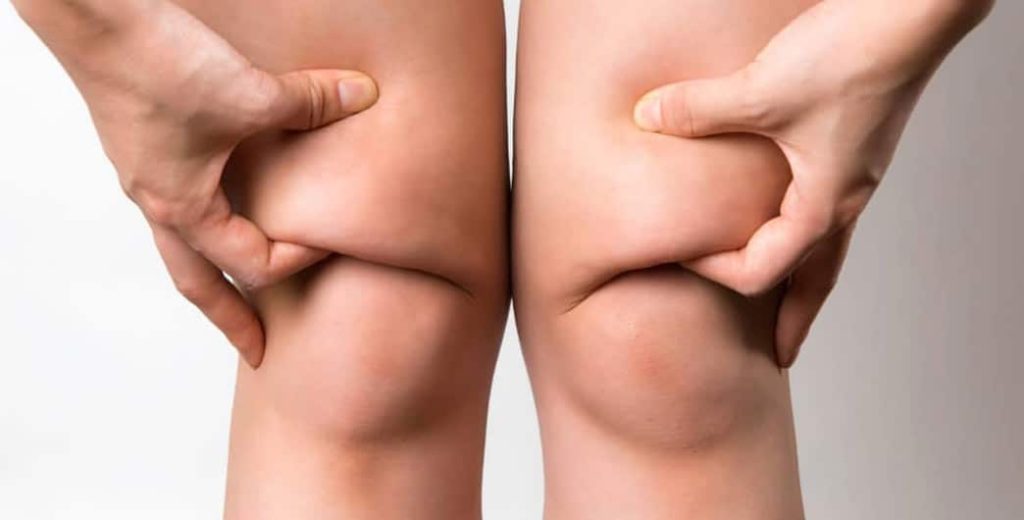Precision in Body Sculpting: How Knee Liposuction Targets Stubborn Fat Deposits
Posted on: March 1, 2024
Knee liposuction is a cosmetic procedure aimed at reshaping the knee area by removing excess fat, offering a more contoured and aesthetically pleasing appearance. This specialized technique requires precision and expertise, as it targets a delicate area where fat tends to accumulate subtly yet persistently. Ideal for individuals struggling with disproportionate lower body fat distribution, knee liposuction promises improved silhouette harmony and confidence in one’s physical appearance. Understanding the process, benefits, and considerations of this procedure can empower those considering knee liposuction to make informed decisions about their body contouring options.
Understanding Liposuction Techniques
Liposuction Methods
There are several techniques for performing knee liposuction. Each has its own benefits and drawbacks.
The tumescent method involves injecting a solution into the fat layer before removal. This makes the fat easier to remove. It reduces blood loss and pain.
Ultrasound-assisted liposuction (UAL) uses sound waves to liquefy fat. This allows for easier fat removal, especially in dense areas.
Laser-assisted liposuction (LAL) employs laser energy to melt fat before it’s suctioned out. It can also promote skin tightening post-surgery.
Choosing Right Technique
Selecting the appropriate technique is crucial for optimal results and safety.
Consider your specific needs when choosing a technique. Factors include the amount of fat, skin elasticity, and recovery time expectations.
Consulting with an experienced surgeon is essential. They can recommend the best approach based on your goals and physical condition.
Role of Technology
Technology plays a significant role in enhancing outcomes.
Advanced equipment allows for more precise targeting of fatty areas. This leads to better contouring and minimal scarring.
Innovations in technology also contribute to shorter recovery times and less discomfort post-procedure.
Understanding these aspects helps patients make informed decisions about their knee liposuction journey.
Benefits of Targeted Liposuction Surgery
Precise Fat Removal
Targeted liposuction allows for the precise removal of fat from specific body areas. This precision is crucial for those hard-to-target spots that don’t respond well to diet and exercise. Unlike traditional methods, targeted liposuction can pinpoint exact locations for fat removal.
This technique ensures minimal discomfort and faster recovery times. Patients often report feeling more comfortable during their recovery period compared to other types of surgery. The precision also reduces the risk of removing too much or too little fat, leading to more satisfactory outcomes.
Enhanced Contour
The main goal of targeted liposuction is to enhance body contour and proportion. By focusing on problem areas, this procedure can create a more balanced look. It’s not just about reducing size but sculpting the body in a way that looks natural and appealing.
Patients see an improvement in how clothes fit and feel better about their appearance. This boost in self-confidence is one of the significant benefits reported by individuals who undergo this type of surgery.
Quick Visual Improvements
One of the most appreciated advantages is the quick visual improvements post-surgery. Unlike weight loss through dieting which takes time, changes after targeted liposuction are immediate. Though full results take time as swelling reduces, initial changes are noticeable right away.
This immediacy can be incredibly motivating for patients continuing their journey towards a healthier lifestyle post-operation.
Liposuction for Body Sculpting
Tailored Procedures
Liposuction surgery offers a way to reshape and contour the body. It removes stubborn fat from targeted areas. Each procedure is tailored to meet the patient’s goals.
Doctors work closely with patients to understand their desired body shape. They consider factors like body contours, overall health, and how much fat needs removing. This customized approach ensures that results align with expectations.
Combined Surgeries
Often, liposuction is not a standalone solution. It can be combined with other surgeries for more comprehensive results.
For example, someone might choose liposuction along with tummy tuck surgery. This combination enhances the abdomen’s appearance more than either procedure alone could achieve. Combining surgeries can address both excess skin and unwanted fat, leading to better sculpting outcomes.
Realistic Expectations
Setting realistic expectations is crucial in body sculpting through liposuction or any cosmetic procedure.
- Pros: Improved body shape, removal of stubborn fat pockets
- Cons: Limits on the amount of fat removed, recovery time needed
Patients should discuss what’s achievable with their surgeon beforehand. Not everyone will get their ‘ideal’ body from liposuction alone due to individual differences in fatty tissue distribution and skin elasticity. Understanding these limitations helps manage expectations and satisfaction levels post-surgery.
Knee Liposuction: Procedure and Benefits
Minimally Invasive
Knee liposuction is a cosmetic procedure that targets fat around the knees. It’s less invasive than many surgeries. This means shorter recovery times for patients.
Doctors use small incisions during the procedure. They insert a thin tube to remove fat from the knee area. Patients often report minimal discomfort post-procedure. The risk of scarring is also low, making it an attractive option.
Improved Contour
This lipo procedure significantly enhances knee appearance. Fat removal reshapes the knee, creating a more defined look.
Patients see results quickly after swelling reduces. Their knees appear slimmer, improving overall leg silhouette. This boost in appearance can lead to increased confidence for many people.
Reduced Inner Knee Fat
Reducing inner knee fat is key for a better leg shape. Knee liposuction specifically targets this problem area.
- After surgery, legs often look longer and leaner.
- Clothes fit better around the thigh and calf areas.
This targeted approach helps achieve desired outcomes efficiently.
Comparing Surgical and Non-Invasive Fat Removal
Procedure Differences
Surgical methods involve incisions. Doctors use tools to remove fat directly. This method requires anesthesia. There are two types: local and general.
Non-invasive treatments use technology, like ultrasound or radiofrequency. They target fat without making cuts. These options have minimal downtime.
Downtime & Risks
Surgery has more downtime than non-invasive methods. Patients need weeks to recover fully from surgical procedures.
Risks vary between the two. Surgery can lead to complications, such as infection or scarring. Non-invasive treatments might cause temporary redness or swelling but are generally safer.
Effectiveness & Preference
Surgical liposuction is often more effective for larger areas of fat removal, including around the knees. It provides immediate results.
However, for smaller treatment areas or patients seeking less invasive options, technologies like ultrasound may be preferred due to their safety profile and minimal recovery time.
Cost Comparison
The cost of knee liposuction varies widely based on the chosen method:
- Surgical options tend to be more expensive due to the need for anesthesia and potentially longer hospital stays.
- Non-invasive treatments might require multiple sessions but usually come at a lower price point per session.
Recovery Insights After Liposuction
Recovery Timeline
After knee liposuction, the recovery time varies. Most people can return to work within a few days. Full recovery may take a few weeks.
It’s crucial to rest initially. Gradually, light activities can resume as comfort allows. Following the surgeon’s guidance speeds up healing.
Post-Op Care
Following post-op instructions is key for optimal healing. This includes wearing compression garments and attending follow-up appointments.
Ignoring these steps may delay recovery or worsen swelling and redness. Proper care ensures better results and reduces complications risks.
Managing Expectations
Swelling after surgery is normal but temporary. It might take several months for it to fully subside.
The final shape of your knees will gradually become apparent as swelling decreases. Patience is essential during this period.
Understanding that immediate changes aren’t visible helps manage expectations about the outcome.
Long-Term Maintenance of Liposuction Results
Diet and Exercise
Maintaining optimal results after knee liposuction involves a balanced diet and regular exercise. These factors play a crucial role in keeping the desired shape. A healthy diet helps in preventing weight gain, which can alter the outcomes of liposuction.
Regular physical activity is essential too. It tones the body and supports overall health. This combination ensures that the visible results last longer.

Weight Management
Understanding that future weight gain can affect liposuction outcomes is vital. Gaining weight post-procedure may lead to uneven fat distribution or diminish the effects of surgery.
To maintain liposuction results, it’s important to keep a stable weight. This might mean adopting new eating habits or lifestyle changes for some people.
Regular Check-ups
Periodic check-ups with your surgeon are key to monitoring long-term results. These visits allow for assessing how well you’re maintaining the outcome of your procedure.
They also provide an opportunity to discuss any concerns or notice potential complications early on. Staying in touch with your healthcare provider ensures safety and satisfaction with your liposuction results.
Ideal Candidates for Liposuction Surgery
Health Criteria
The ideal candidate for liposuction is someone in good health. They should not have conditions that could complicate surgery or recovery. A cosmetic surgeon will assess your health status during the initial appointment.
Candidates must have realistic expectations about what liposuction can achieve. It’s not a weight-loss method but rather a way to remove specific fat deposits. Understanding this difference is crucial.
Stable Weight
Having a stable body weight is important before undergoing liposuction. Patients who are close to their ideal weight tend to see the best results. This stability indicates a commitment to maintaining outcomes through a healthy lifestyle.
Surgeons recommend that candidates adhere to a balanced diet and exercise routine before and after surgery. This approach helps preserve the procedure’s effects long-term.
Nonsmokers Advantage
Nonsmokers generally experience better recovery and outcomes from liposuction surgery. Smoking can delay healing and increase complication risks, making nonsmokers more suitable candidates.
Plastic surgeons often advise patients to quit smoking well in advance of their scheduled procedure. Doing so improves overall surgical success rates and promotes healthier living habits among individuals seeking cosmetic improvements.
Summary
Knee liposuction emerges as a specialized procedure designed for individuals aiming to sculpt and define the area around their knees. This technique underscores the evolution of cosmetic surgery, offering a solution for those who seek to enhance their body’s contour through targeted fat removal. The process not only aligns with the aesthetic desires of patients but also contributes to their overall well-being by boosting confidence and satisfaction with their physical appearance. Ideal candidates are those in good health, with realistic expectations about the outcomes of such surgeries.
The journey from understanding various liposuction techniques to maintaining long-term results after knee liposuction is comprehensive, requiring informed decisions and commitment to post-operative care. Prospective patients should engage with board-certified surgeons to discuss their goals and concerns. This dialogue ensures personalized treatment plans that align with individual needs, optimizing outcomes. For further exploration or to schedule a consultation, individuals are encouraged to contact a qualified professional.
Frequently Asked Questions
What is knee liposuction?
Knee liposuction is a surgical procedure aimed at removing excess fat around the knee area to sculpt and define the lower leg, enhancing its overall appearance.
How does knee liposuction differ from other liposuction techniques?
Knee liposuction specifically targets the fat deposits around the knees, which are often resistant to diet and exercise, unlike more general techniques that focus on larger body areas.
What are the benefits of undergoing knee liposuction?
The primary benefit is improved leg contour and definition. It can also boost self-confidence by achieving a more proportionate look between the thighs and calves.
Can anyone undergo knee liposuction surgery?
Ideal candidates are those in good health, with realistic expectations, who struggle with excess fat around their knees not responsive to diet or exercise.
What should I expect during recovery from knee liposuction?
Recovery typically involves some swelling and bruising with most patients returning to normal activities within a few weeks. Following your surgeon’s aftercare instructions is crucial for optimal healing.
How long do results from knee liposuction last?
With proper maintenance including a healthy lifestyle, results can be long-lasting. However, significant weight gain can affect outcomes negatively.
Is there an alternative to surgical knee liposuction?
Yes, non-invasive fat removal methods exist but may not provide as dramatic or targeted results as surgical options. Consulting with a qualified professional will help determine the best approach for your needs.





